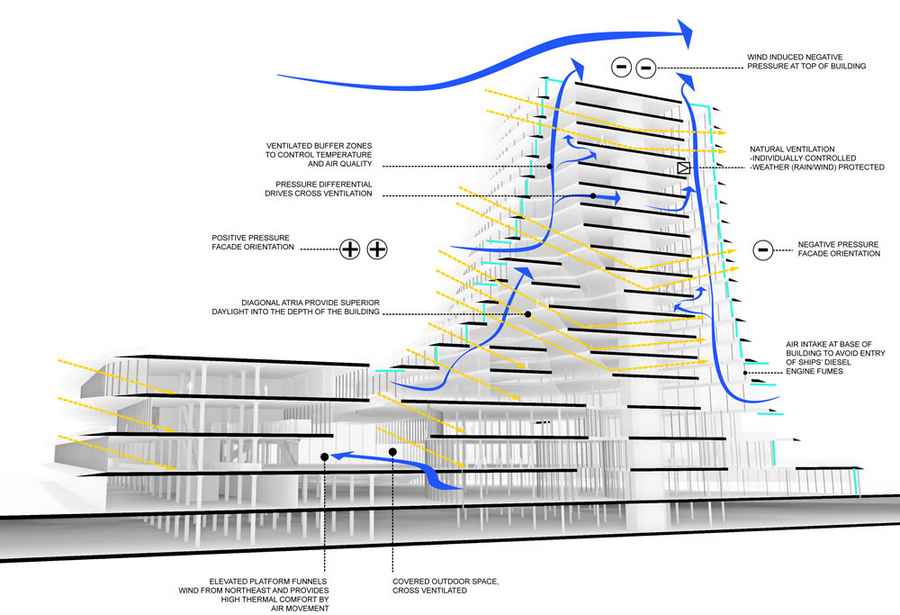Keelung, Taiwan's second-largest seaport, experiences extreme heat and humidity, as well as plenty of wind and rain year-round. The result may be one of the most difficult climates in which to build naturally-ventilated and energy-efficient buildings. But New Amsterdam architects, Cie, is to use natural ventilation to cool the main building during the winter, spring and fall seasons. The rounded shape of the building factors into its ability to naturally cool itself without excess air-conditioning. "The extremely constant wind direction and velocity mean that the form of the building is intended to maximize the possibility of using cross ventilation to exhaust hot air from the building during natural ventilation mode (almost half of the year)," explain the architects. Inside, Cie employed a zoned climate strategy, setting different temperature and humidity controls based on how different parts of the building will be used as an example of how a building can naturally ventilate during the autumn, winter, and spring seasons.

Transient simulation of thermal systems This ambition obviously reduces the energy consumption of the building dramatically and increases the thermal comfort. The design is based on based two main principles: a zoned climate strategy - where the building is like an onion with different temperature and humidity layers based on function and number of users; as well as aerodynamic efficient forms - with the extremely constant wind direction and its velocity meaning that the form of the building maximizes the possibility of using cross ventilation to exhaust hot air from the building during natural ventilation mode for almost half of the year. The team of of architects Cie, led by Jason Lee and Branimir Medic, worked in close collaboration with the German climate engineers, Transsolar, whose software TRNSYS provides a simulation environment for thermal systems, including multi-zone buildings. Cie Transsolar